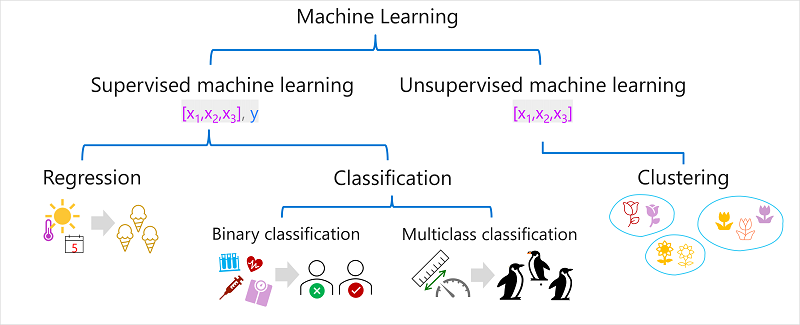Azure AI: overview
If you are taking your first steps in AI and would like to discover what the possibilities are or if you are already experienced and want to get started right away, then you have come to the right place. You can implement these elements yourself (via subscription with us) or we can assist you with their rollout.
Generative AI

Design a custom AI assistant using ChatGPT. Experiment with GPT-3.5-Turbo and GPT-4 models.

Generate unique images by creating natural language descriptions via the Dall E model.

Transcribe your audio with the Whisper model.

Connect and ground your data.
Deploy to a Web App or a Power Virtual Agent (Copilot Studio).
The big difference with Chat GPT is that you can add your own company data to Copilot. This can be done in 3 ways:
- via predetermined topic flows that are triggered by predetermined sentences
- via generative AI based on a website (public or SharePoint)
- via generative AI based on documents such as PDF
Everything, of course, within the secure environment of Microsoft 365. Your data will not be used for training and will not be released to the general public.
For example, you can link Copilot to Teams so that your employees can easily access the data internally.
You can easily create this yourself via Copilot Studio (with or without training through us). You can even create such a bot from Teams. No more need for developers. Your projects can therefore be completed faster.
Machine Learning

Supervised machine learning is used to train models by determining a relationship between the features and labels in previous observations, so that unknown labels can be predicted for features in future cases.
Regression is a form of supervised machine learning in which the label predicted by the model is a numerical value. For example:
- The number of ice creams sold on a given day, based on temperature, rainfall and wind speed.
- The sales price of a home based on its size in square meters, the number of bedrooms it contains and socio-economic measures for the location.
- The fuel consumption (in km per liter) of a car based on engine size, weight, width, height and length.
Classification is a form of supervised machine learning where the label represents a categorization or class. There are two common classification scenarios:
In binary classification, the label determines whether or not the observed item is an instance of a specific class. Or put another way, binary classification models predict one of two mutually exclusive outcomes. For example:
- Whether a patient is at risk for diabetes, based on clinical data such as weight, age, blood sugar levels, etc.
- Whether a bank customer is unable to repay a loan, based on income, credit history, age and other factors.
- Whether a mailing list customer will respond positively to a marketing offer based on demographics and previous purchases.
In all these examples, the model predicts a binary true/false or positive/negative prediction for a single possible class.
Multi-class classification extends binary classification to predict a label representing one of several possible classes. For example:
- The species of penguin (Adelie, Gentoo or Chinstrap) based on its physical size.
- The genre of a film (comedy, horror, romance, adventure, or science fiction) based on its cast, director, and budget.
Unsupervised machine learninginvolves training models using data consisting only of feature values without known labels. Unsupervised machine learning algorithms determine the relationships between the characteristics of the observations in the training data.
The most common form of unsupervised machine learning is clustering. A clustering algorithm identifies similarities between observations based on their characteristics, and groups them into separate clusters. For example:
- Group similar flowers based on their size, number of leaves and number of petals.
- Identify groups of similar customers based on demographics and purchasing behavior.
Azure Cognitive Services: Speech
Give your apps the power to hear, understand, and even speak to your customers with features like speech-to-text and text-to-speech.
Azure Cognitive Services for Language
Use our Natural Language Processing (NLP) features to analyze your textual data using state-of-the-art, pre-configured AI models, or customize your own models to fit your scenario. For example:
- Post call: convert call center recordings into text and extract interesting information (such as Personal Identifiable Information, sentiment)
- summarize the most important and relevant information
- translate
Azure AI Vision
Give your apps the power to read text, analyze images, and detect faces with technology like optical character recognition (OCR) and machine learning.
Document Intelligence
You can easily extract important data from documents or create your own custom models without code. This includes automatically extracting information from invoices and recognizing the information (name, address, amount, item, etc.).
Integration
Many of these elements can be used in combination with each other to achieve the desired solution. Do not hesitate to contact us for advice.
Would you like an analysis of your network or additional information?
We can help you with this.